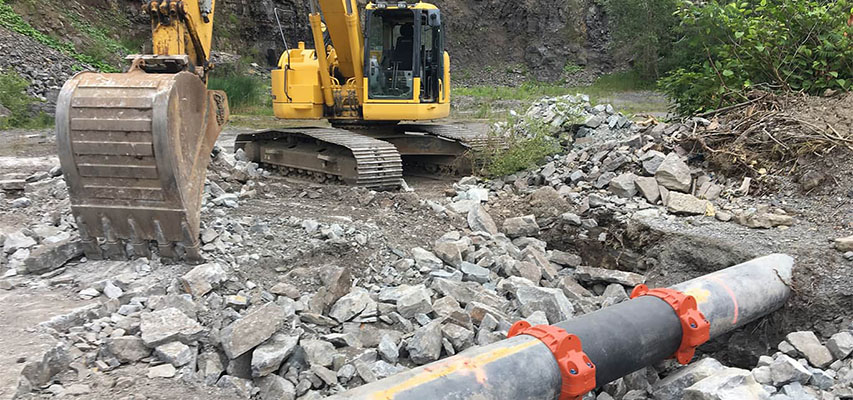15
Aug
Performance Characteristics Of HDPE Mining Pipe
HDPE mining pipe is a kind of HDPE pipe, which has the advantages of light weight, long life and convenient construction. The weight is only 1/7 of the steel pipe, 1/2 of the glass steel pipe, but the service life is 4-5 times that of the steel pipe. The transportation and installation are convenient, especially in the underground, which can greatly reduce the labor intensity of workers and improve work efficiency. And it has strong corrosion resistance, no anti-corrosion treatment is required, which saves related expenses, and is especially suitable for underground operations.
The underground working environment has great requirements for HDPE mining pipes. Puhui mining polyethylene pipes are made of special polyethylene raw materials with flame retardant and antistatic properties. The production equipment is imported from Germany and is extruded at high temperature.Let’s learn about Performance Characteristics Of HDPE Mining Pipe and industry standards
Performance Characteristics
- Flame retardant, antistatic
- Good aging resistance and crack resistance
- High pipe wall finish and small fluid resistance
- Good water tightness and environmental protection
- Light weight, long life, convenient construction
Application Fields: Widely used in coal mine underground water supply pipes, mine positive and negative pressure ventilation pipes, mine spray pipes, mine gas drainage pipes, etc.

Industry Standard
Before construction, it should be confirmed whether the HDPE mining pipeline meets the standard requirements of the industry, as follows:
- Appearance: The inner and outer walls of HDPE pipes for mining should be smooth and flat, without air bubbles, cracks, obvious grooves, depressions, etc. The appearance and color are uniform, and the two ends of each pipe should be perpendicular to the axis.
- Wall thickness deviation: The wall thickness deviation of the same section of the pipe does not exceed 14%.
- Wall thickness: The minimum wall thickness of the pipe corresponding to the nominal outer diameter and nominal pressure should meet the standard requirements.
- Out-of-roundness: The out-of-roundness of the pipe should not exceed 5%.
- Flat: HDPE pipe is pressed until the inner wall is full, and there should be no cracks or damage.
- Hydraulic pressure: The test pressure should be maintained for 100 hours, and the PE pipe should have no leakage or damage.
- Tensile strength and elongation at break: The tensile strength should not be less than 9.0Mpa, and the elongation at break should not be less than 300%.
- Surface resistance: According to the different uses of PE mining pipes, the surface resistance requirements are also different.
① Pipes for water supply and drainage: the arithmetic average value of the surface resistance of the outer wall shall not be greater than 1.0×10^9Ω;
② Positive pressure air duct: the arithmetic average value of the surface resistance of the inner and outer walls should not be greater than 1.0×10^8Ω;
③ Shotcrete pipe: the arithmetic average value of the surface resistance of the inner and outer walls should not be greater than 1.0×10^8Ω;
④ Negative pressure air duct: the arithmetic average value of the surface resistance of the inner and outer walls should not be greater than 1.0×10^6Ω;
⑤ Pipes for gas drainage: the arithmetic mean value of the surface resistance of the inner and outer walls should not be greater than 1.0×10^006Ω.
9. Flanges used in coal mines should be greater than or equal to the technical standards of HDPE pipes used in coal mines.

